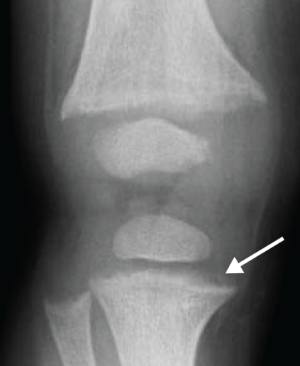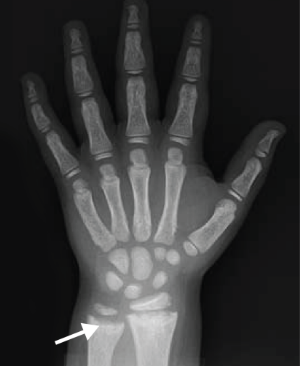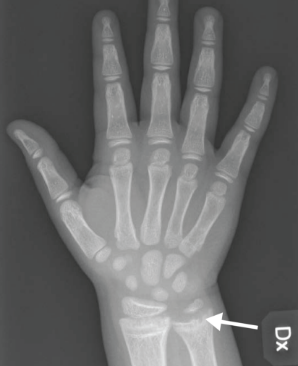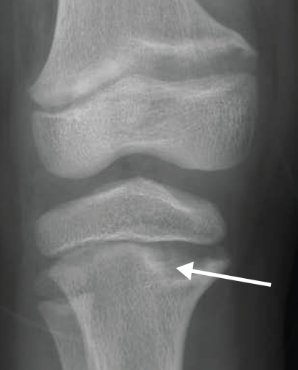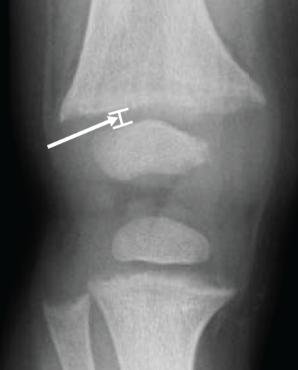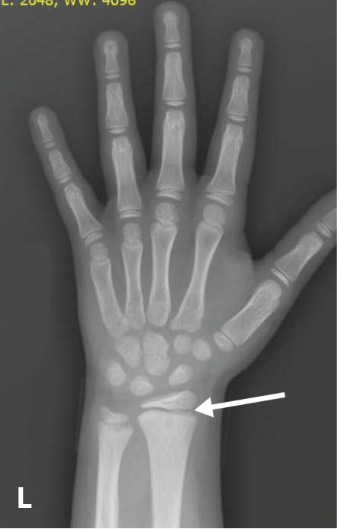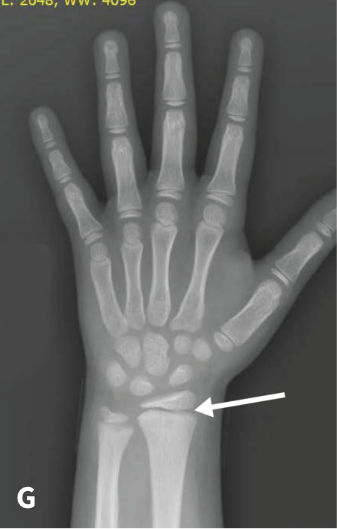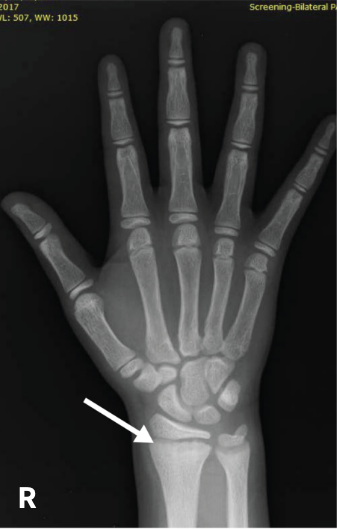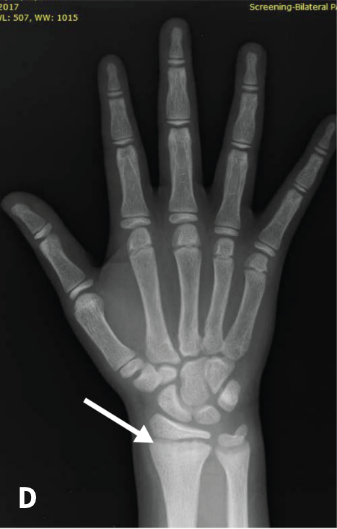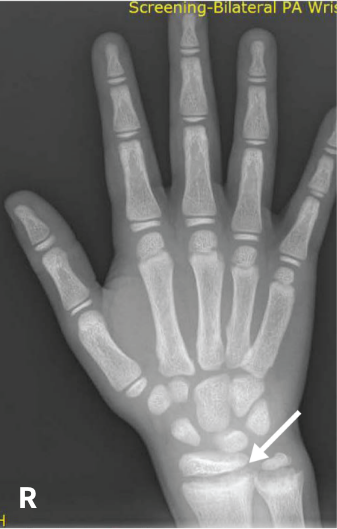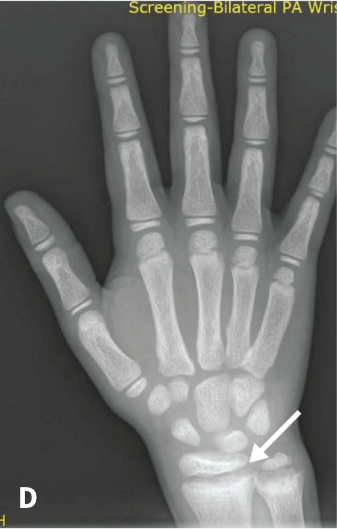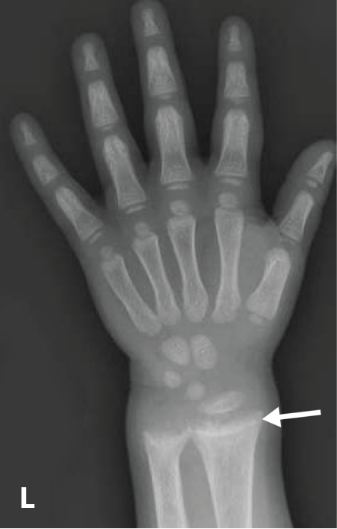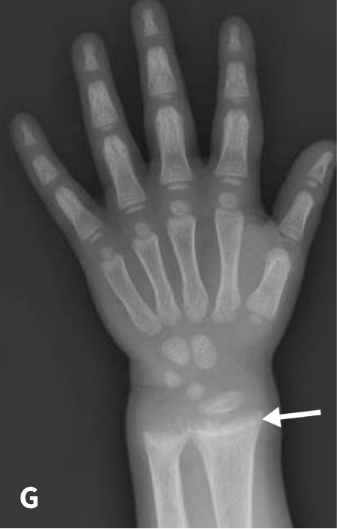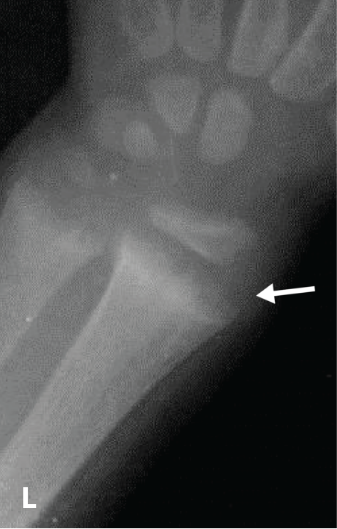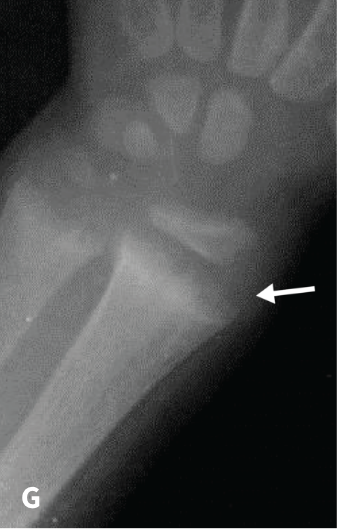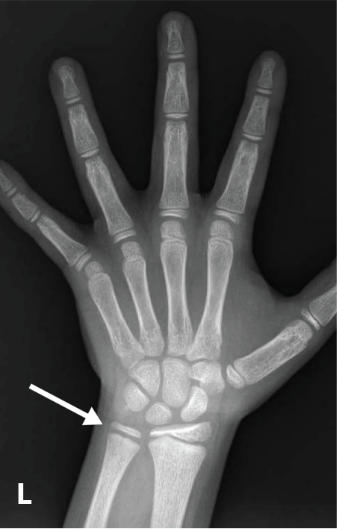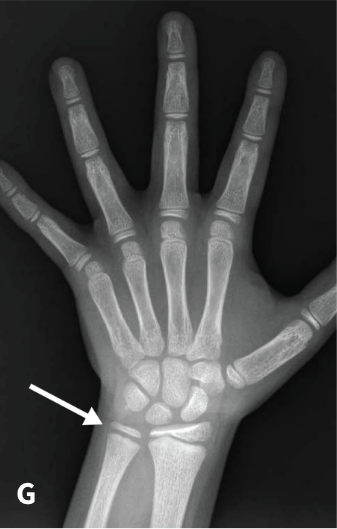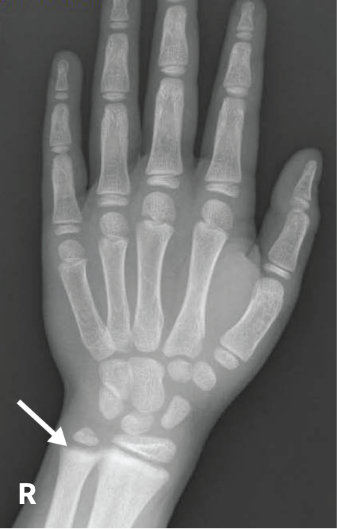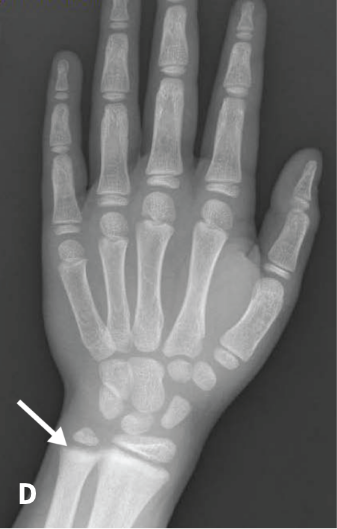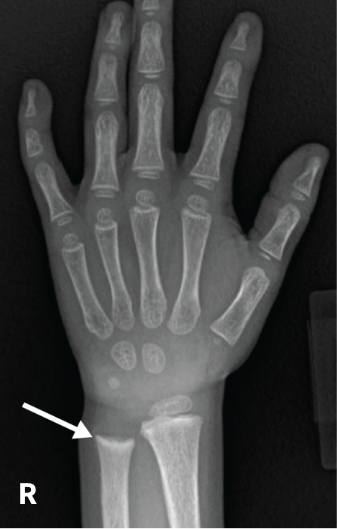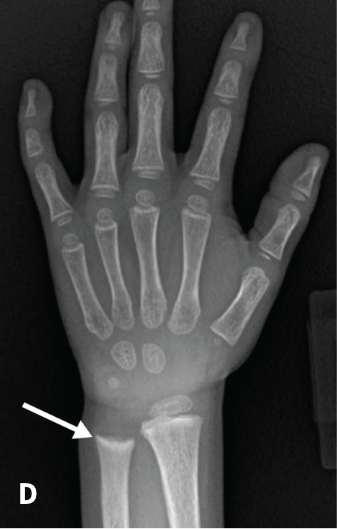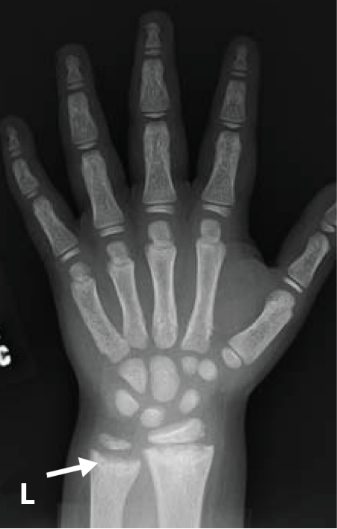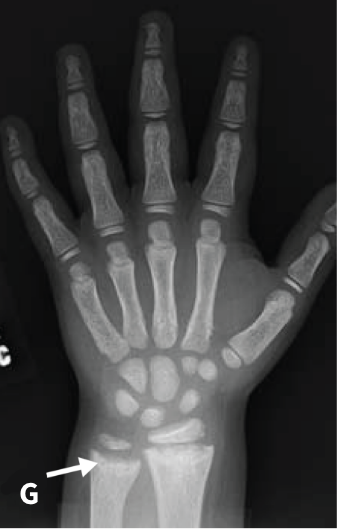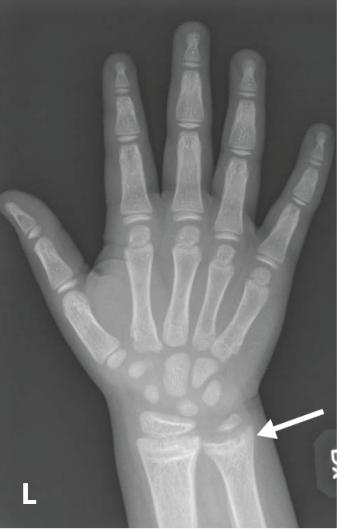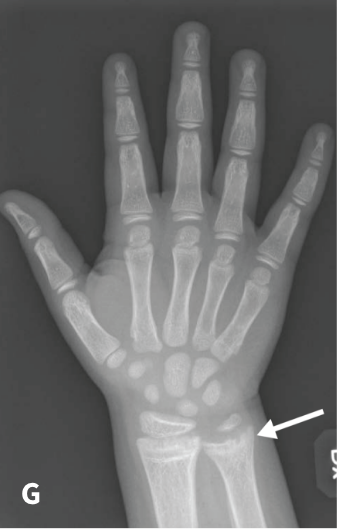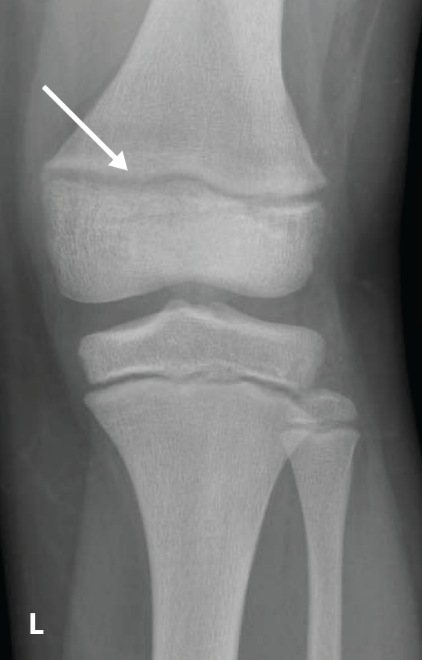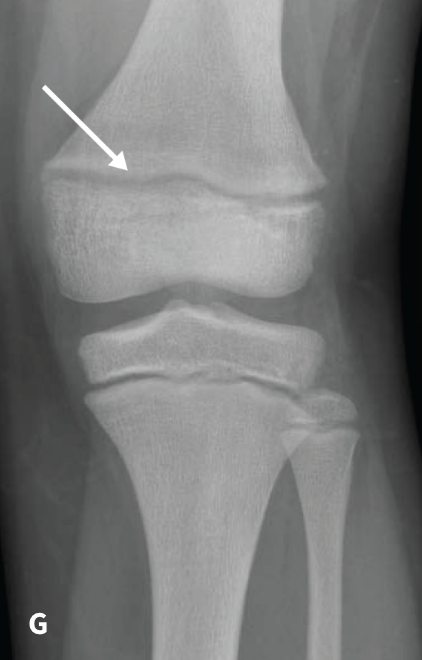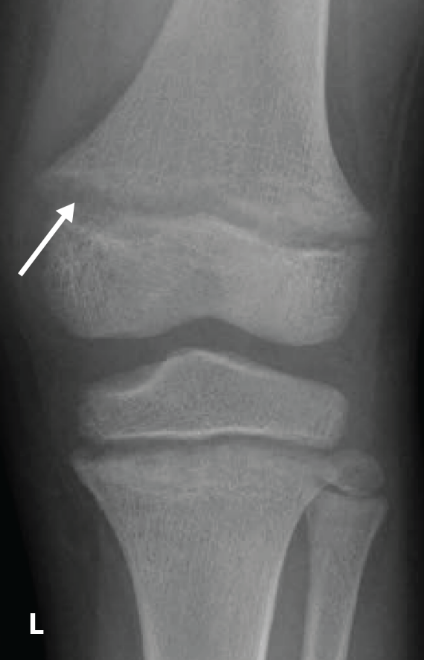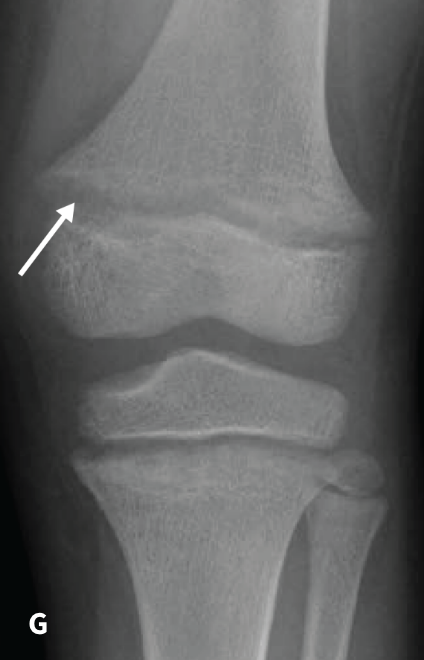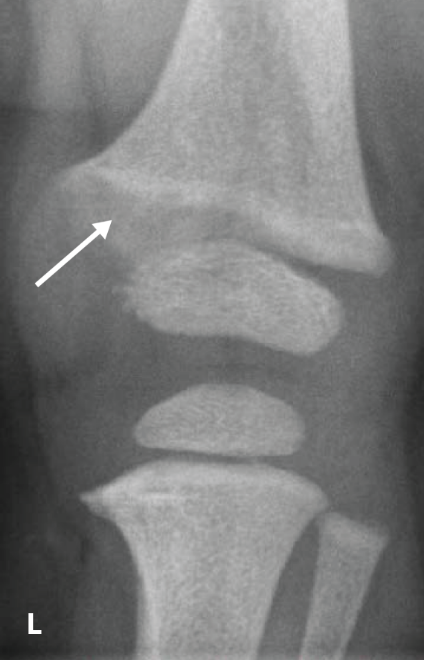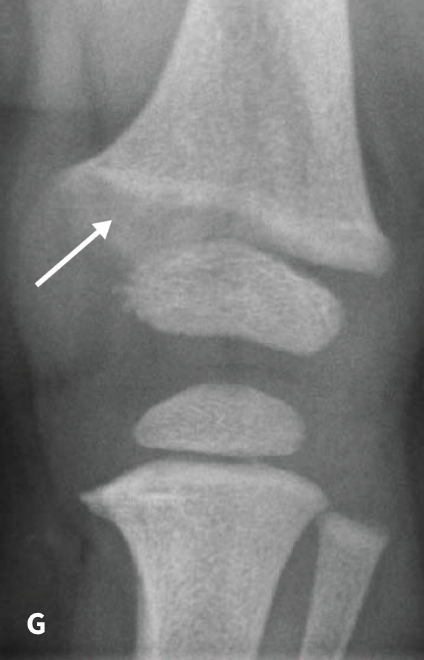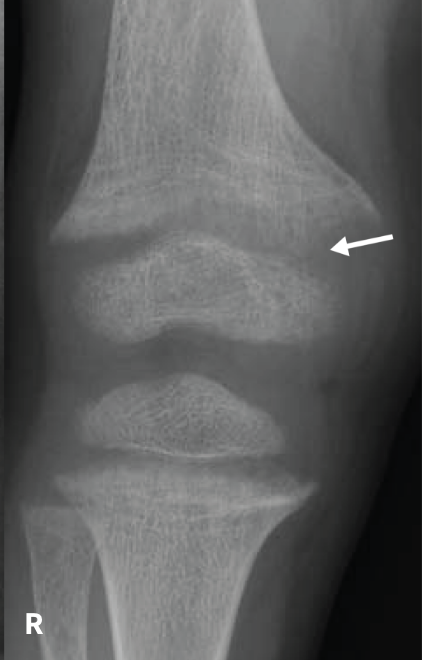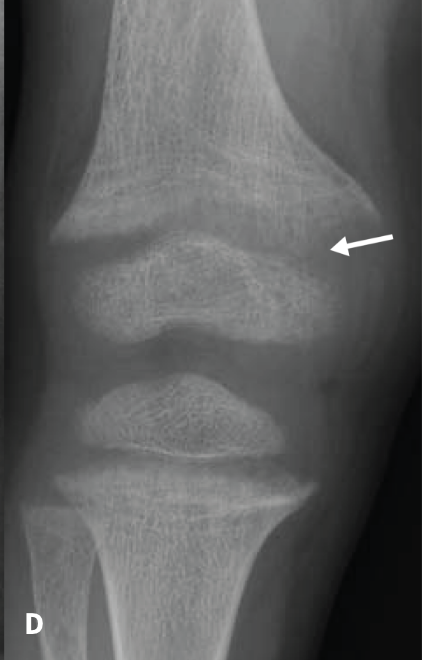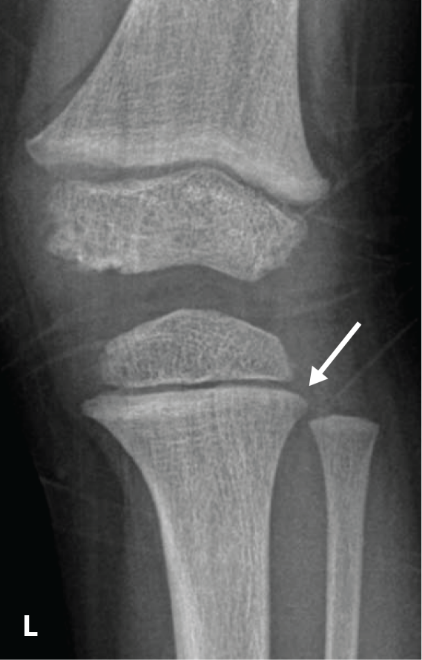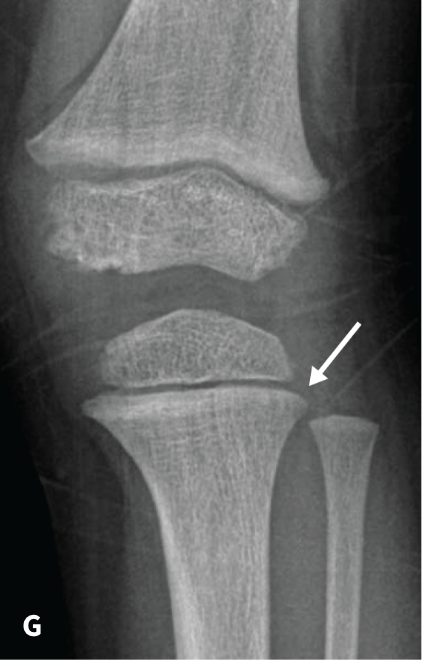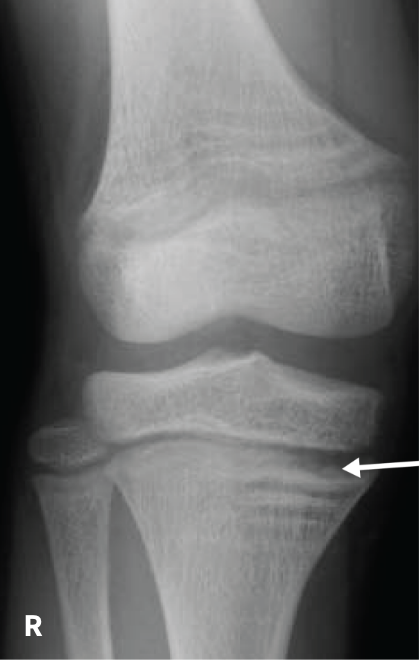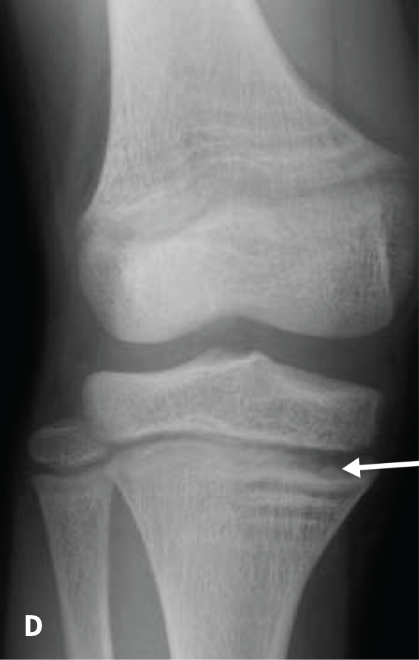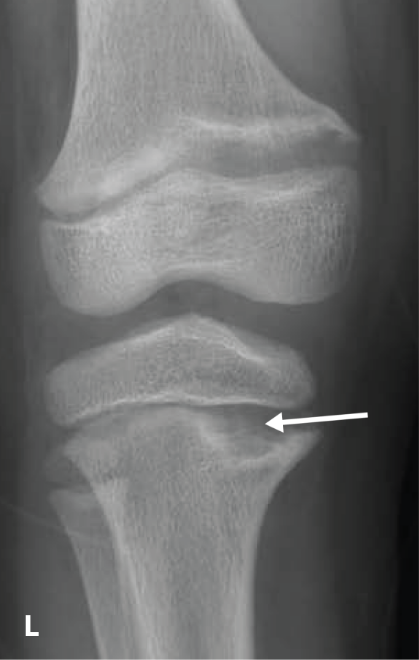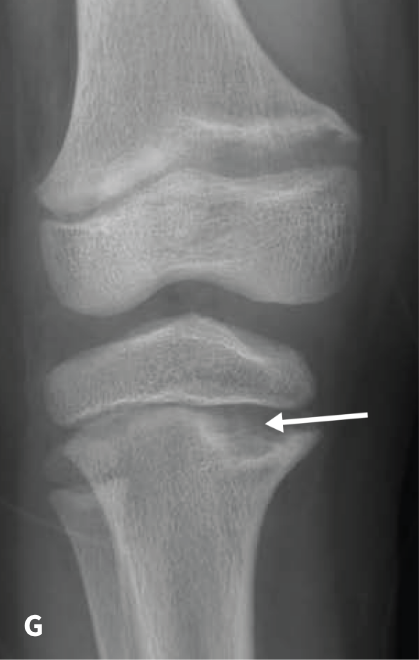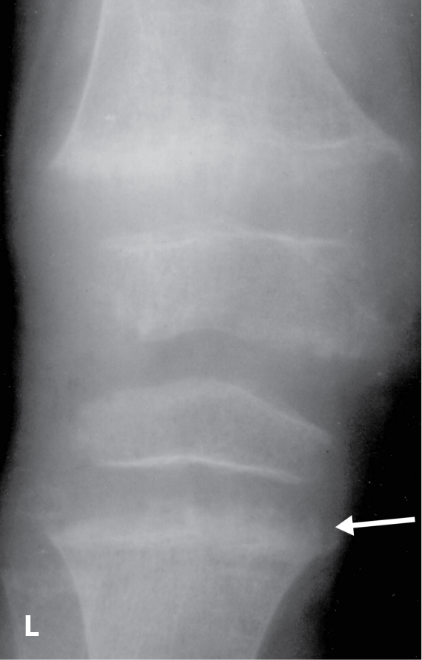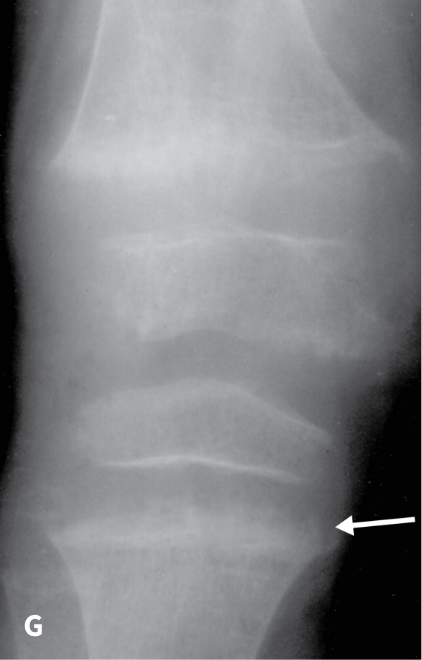RSS Training Tool: About the Rickets Severity Score (RSS)
The Rickets Severity Score (RSS)
The RSS is a quantitative method that uses radiographs to assess the severity of rickets at the wrists and knees. Originally validated in nutritional rickets, the score is based on the degree of metaphyseal fraying, metaphyseal cupping, and the proportion of the growth plate that is affected. It is a 10-point scale, for which 10 represents the most severe radiographic changes due to rickets and 0 represents the absence of these changes.1

Tip: This illustration is a useful reference to view as you’re scoring images. In the Scoring Practice and Patient Cases sections, just tap the Scoring Guide button to view it while you are scoring a radiograph.
X-linked hypophosphatemic rickets (XLH)1
XLH is a hereditary form of rickets caused by loss-of-function mutations in the PHEX gene that lead to high circulating levels of fibroblast growth factor 23 (FGF23).
Although the severity and duration of rickets vary considerably between XLH and nutritional rickets, the radiographic features of rickets at the growth plate are similar in the two disorders, which allowed validation of the RSS in XLH. The RSS correlates with serum alkaline phosphatase (ALP) levels, a biochemical marker of rachitic activity, and this scoring system can be used to assess the radiographic response following treatment of nutritional or XLH rickets.
The RSS in XLH has been reported to range from 0 to 4.5; however, despite the smaller RSS range observed in XLH patients, inter- and intra-rater reliability are similar to those reported for nutritional rickets. Patients with XLH who had a baseline RSS ≥1.5 were shown to have more severe hypophosphatemic bone disease, including higher levels of alkaline phosphatase, and greater impairments in clinical outcomes compared with patients who had a baseline RSS <1.5.

